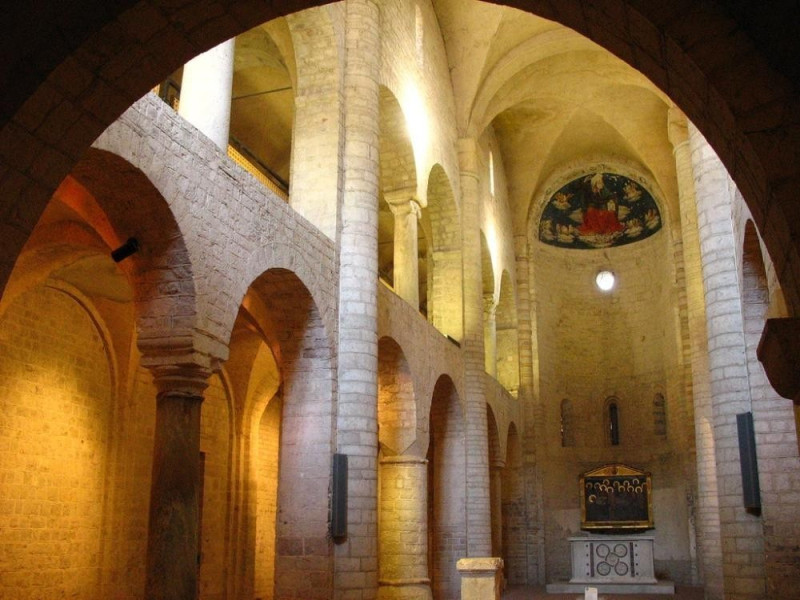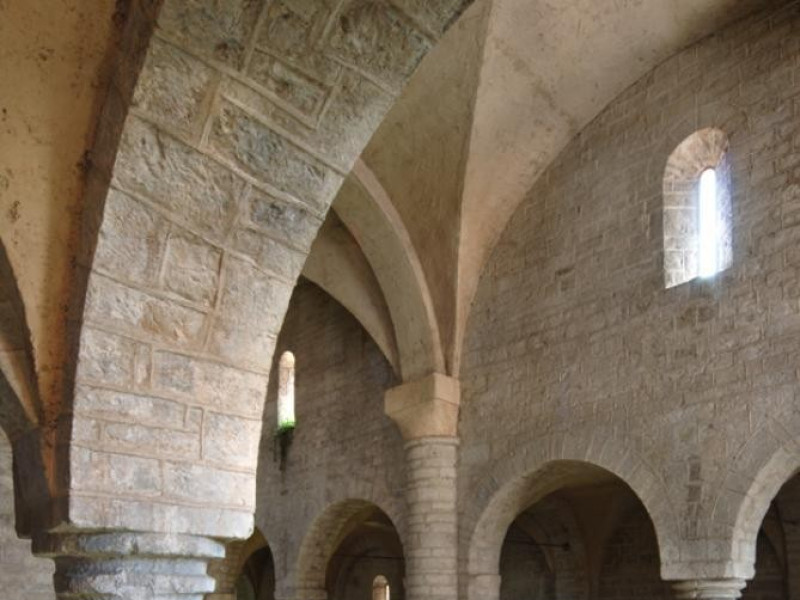Luogo - Religious building
Basilica di Sant'Eufemia
Where
Via Aurelio Saffi, 13, Spoleto (Perugia)
Sant’Eufemia Basilica
The Church of Sant’Eufemia is one of the most interesting Romanesque edifices in Umbria. It stands within the enclosure of the Archbishop Palace, in Via Saffi, one of the central roads of Spoleto.
The earliest news about this edifice remounts to the 10th century, when a Benedictine nunnery was annexed to it. In 980, Gunderada, the founding sister of the monastery, translated there the body of the Bishop John from Spoleto, who was martyrized under the Goths.
The Church was rebuilt in the first half of the 12th century, as per the Romanesque style typical of Spoleto, reminiscent of the architectonical experience of the Longobard period. During the 17th century, deleterious adaptations spoiled the original appearance of the edifice that was divided into two floors: the lower part destined for the cult; the upper part incorporated into the Bishop Palace. This situation lasted until 1907, when the complete restoration of the complex—concluded in 1954—was decided.
The sober façade, with a higher central body, is decorated by a Portal crowned with three embedded arches and surmounted by an elegant bifora—a double lancet window—and some monofore—lancet windows. The rare tripartite internal structure—a central main nave and two lateral ones divided by pilasters and columns of spolia—with three apses and matroneums, recalls that of the Church of San Lorenzo in Verona, documented in 1110.
Inside, the narthex occupies the space of the first bay and makes communication possible between the two matroneums. The presence of the matroneum is explained, according to tradition, by the presence of a pre-existing chapel—pertaining to Palazzo Ducale and built on the model of the Palatine Chapel of Aachen—here. The Main Altar comes from the Cathedral and is decorated by a beautiful 13th century antependium sculpted in low relief—with the Lamb of God and the Symbols of the Evangelists—and cosmatesque patterns. The fresco decoration of the apse is mostly lost; it preserves only God the Father and Cherubs—16th century—in the semi-dome.



